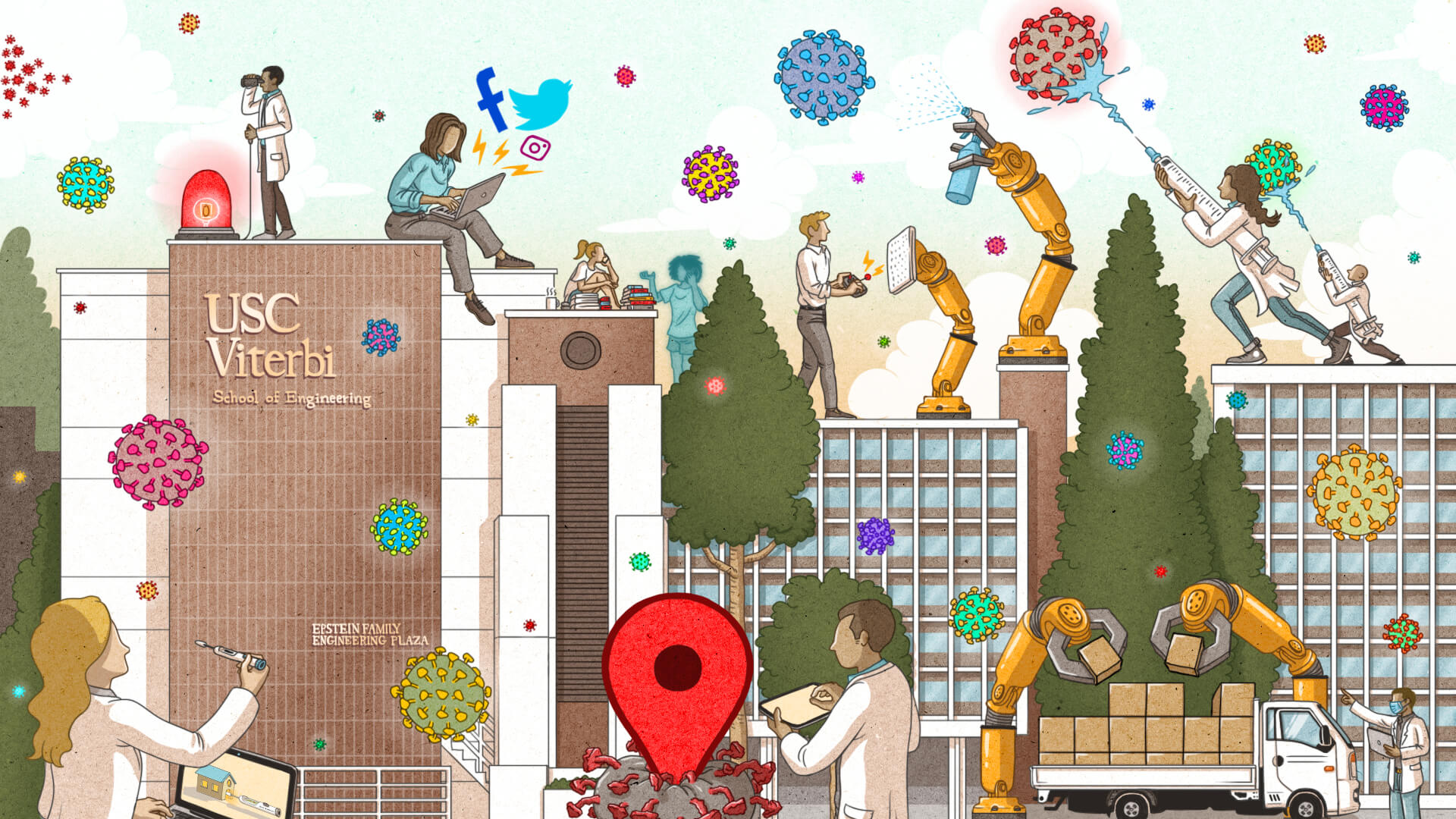Trojan Engineers Combat COVID-19 on Multiple Fronts
COVID-19 has spread to nearly every country in the world, with confirmed cases surpassing 20 million and deaths surpassing 745,000. Given the novel nature of the coronavirus, there has been a steep learning curve in identifying how it spreads, how it affects different people and how we can build immunity against it.
USC Viterbi researchers are meeting the challenge of mitigating the impact of the global pandemic in myriad ways, including creating and testing a potential vaccine and building an early warning system to signal community spread of the virus. Additional research focuses on disinfecting surfaces remotely, epidemic forecasting, contact tracing, manufacturing and distributing personal protective equipment (PPE), combating misinformation about the virus online, and helping navigate the emotional and physical challenges of isolation.
The goal is to create a network of actors that can attack the virus from different angles, helping accelerate our progress back toward what we now fondly regard as normalcy.
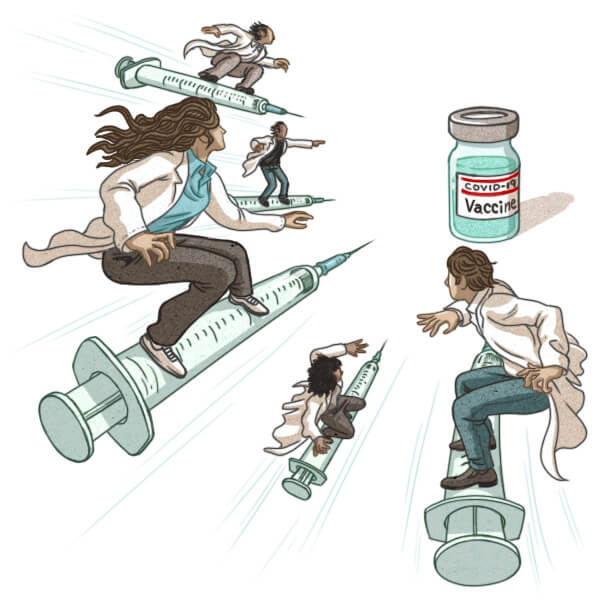 Race to a Vaccine
Race to a Vaccine
As of early August, infections were still rising in over half the United States, while dozens of companies race to find a vaccine that can ultimately help end the pandemic.
One such vaccine research program is being helmed by Pin Wang, professor in the Mork Family Department of Chemical Engineering and Materials Science. Wang and his team are attacking the problem from two angles: searching for a viable vaccine and identifying therapeutic treatments that can improve recovery times for COVID-19 patients.
Wang’s lab specializes in an emerging field called immunobioengineering, which uses engineering tools to better understand the immune system and to develop novel molecular and cellular immunotherapies. To create the vaccine, Wang, a Zohrab A. Kaprielian Fellow in Engineering, and his team have engineered a hybrid virus, the core of which is based on the vesicular stomatitis virus (VSV), actually a family of viruses that includes rabies, among others. The surface of the hybrid virus is then covered with protein spikes derived from the coronavirus. The idea is to trick our immune systems into recognizing the virus and then inducing the neutralizing antibody to stop it from infecting us in the future. Different from typical vaccines, this “vectored vaccine,” which omits harmful components of original viruses, is thought by many to be safer because instead of injecting the actual virus into the body, it mimics it to produce antibodies.
Wang said the vaccine research is also looking into how our cells’ immune response works to combat the virus so that this process can be replicated in the development of therapeutics that could manage COVID-19. “If we can immunize animals like mice, then we can isolate the B cells that that can generate antibodies — antibodies that can neutralize the virus,” Wang said.
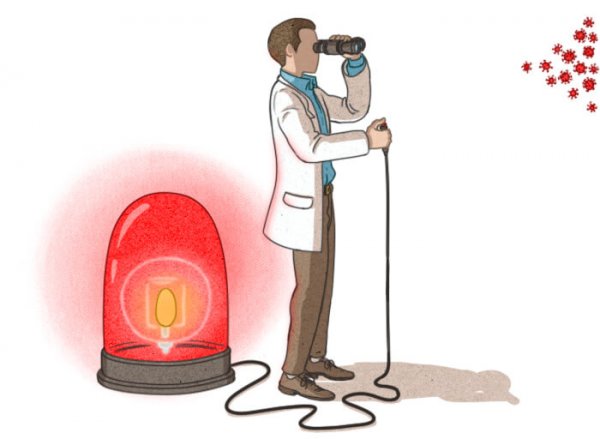
Building an Early Warning System
Forecasting the Trajectory of the Pandemic
Beating a pandemic relies on many factors. One key element is forecasting.: We need to better understand the pandemic’s nature, where is it spreading the fastest, what areas seemed poised for an outbreak, and who is most vulnerable and at risk for infection.
For years, Professor Viktor Prasanna, the Charles Lee Powell Chair in the Ming Hsieh Department of Electrical and Computer Engineering, developed models to better forecast what epidemics might do next. Working with Ajitesh Srivastava, a USC Viterbi senior research associate, he has begun inputting current data into their models. That means collecting data by looking at things like official statistics of confirmed cases. It also means collaborating with other researchers on campus who might have data from other projects, and tapping industry connections at companies like Safegraph, which works to democratize access to data.
For their work, an initial version of which has been shared in an open-access paper currently under peer review, they have been given a National Science Foundation Rapid Response Research (RAPID) award of $158,000 — a special classification for research that requires immediate results. Their country and state-level predictions can be explored through an interactive web interface.
The research team is working with the Centers for Disease Control and Prevention to provide forecasts for every county and state on a weekly basis. The state forecasts appears under the name “USC” here: www.cdc.gov/coronavirus/2019-ncov/covid-data/forecasting-us.html.
Forecasting done right can answer a whole host of questions, all of which are vital to getting the world back on track. When and how should local and national economies reopen? Where should governments be investing resources? What types of supplies should manufacturers be focused on making?
The next step for the team is to run their model using new information and further refine their results. “As more data is coming out on things like the number of recovered people and antibody test results, we can incorporate that information to even better inform decision-making,” Srivastava said.
Community-Specific Warning Systems
As communities across the U.S. continue reopening, rises in coronavirus cases suggest a surge in some places. But what if we could identify an uptick in cases of community spread, including in asymptomatic cases, before numbers climbed too high?
Scientists across the globe have begun analyzing wastewater to help estimate infections in the community, given that most people will never be tested. SARS-CoV-2, the virus that causes COVID-19, can shed into fecal matter — reportedly at a rate of 30% to 60% in infected individuals, even if those individuals are asymptomatic — providing a clue as to when community spread is increasing and serving as an early warning signal to narrow restrictions in these areas.
Adam Smith, associate professor in the Sonny Astani Department of Civil and Environmental Engineering, and his research group are among those looking into wastewater samples. Partnering with Howard University, North Carolina State University and Rice University, the researchers received $200,000 from the NSF RAPID fund to do wastewater-based surveillance of the virus as a community scale indicator of infection rates. Ultimately, they hope to collaborate with local public health departments, including the Los Angeles Public Health Department, to help prepare local communities for new outbreaks.
“The goal isn’t to identify an actual number of infections in the community,” Smith explained, “but instead to correlate the wastewater data to clinical data and provide complementary intel. As social distancing is relaxed, an increase in viral RNA [viral genetic material] in wastewater could help serve as an early warning that community spread is increasing once again.”
The team includes Francis de los Reyes, professor at NC State; Lauren Stadler, assistant professor at Rice University; Jeseth Delgado Vela, assistant professor at Howard University; and Nadine Kotlarz, postdoctoral scholar at NC State. They will look at wastewater samples from treatment plants in Houston; Raleigh, North Carolina; Los Angeles; and the Washington, D.C., metro area.
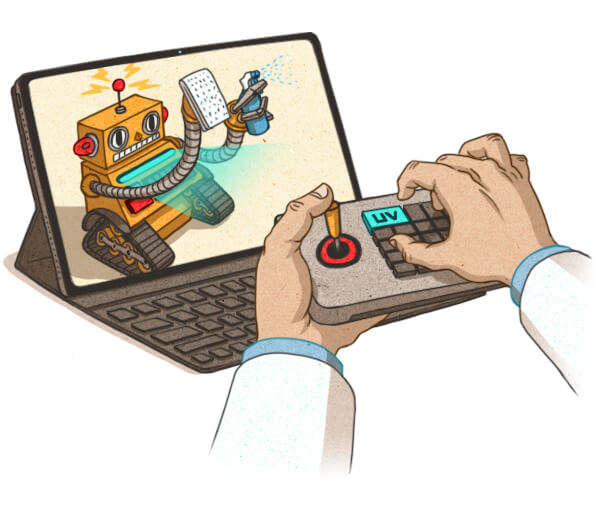
Disinfecting Surfaces Remotely
The CDC advises frequent disinfection of surfaces and objects to reduce the risk of coronavirus spread. Hours at essential businesses such as grocery stores have been shifted to allow for increased sanitization of items like carts and conveyor belts. Meanwhile, healthcare facilities require around-the-clock cleaning, a task that puts undue stress on already-taxed front-line workers.
In addition to issues with disinfection of surfaces, health officials report acute shortages of personal protective equipment (PPE), which needs to be replaced after use in order to treat patients safely. In the absence of new gear, they are searching for solutions to reuse existing equipment so they can prevent the disease from spreading. Tasked by the Keck School of Medicine to find a solution, Professor Andrea Armani and her lab team developed a virus-busting PPE disinfectant method that utilizes UV light to monkeywrench the genetic code of coronavirus so it can’t replicate itself. What’s more, it’s fast, simple to enact and uses off-the-shelf, low-cost equipment. It can also be deployed at multiple locations quickly, making secondary disinfection a decentralized process.
So far, the technique has only been tested for face shields, not other types of PPE. Armani said they focused on face shields because there’s an urgent need for that sort of disinfection, and it was easier to work with hard, plastic surfaces.
The research group specializes in the interaction of light and biology, especially biomedical devices, and also develops advanced materials and integrated optical devices for portable disease diagnostics. Armani is the Ray Irani Chair in Chemical Engineering and Materials Science at USC Viterbi. She also holds an appointment at the USC Michelson Center for Convergent Bioscience and the Lawrence J. Ellison Institute for Transformative Medicine of USC.
Meanwhile, a team led by SK Gupta, director of the USC Viterbi Center for Advanced Manufacturing (CAM), adapted a 2017 project, ADAMM (Agile Dexterous Autonomous Mobile Manipulation System) to disinfect spaces remotely and autonomously. Using a six-jointed robotic arm, ADAMM — a robot designed to support repetitive human tasks — can reach smaller surfaces and manipulate objects like a coffee mug or keyboard. The robot sprays CDC-approved chemical disinfectants to completely coat surfaces.
Next, Gupta, the Smith International Professor in Mechanical Engineering, and the researchers are learning how different surfaces can affect cleaning plans. They are also looking at building layouts and how airflow in different spaces can impact the spread of germs. These variables will be incorporated in planning the robot trajectories to ensure sufficient disinfectant has been sprayed. The robot will also be trained to wipe the disinfectant once coverage is validated.
The National Institute of Standards and Technology (NIST) funded the initial research.
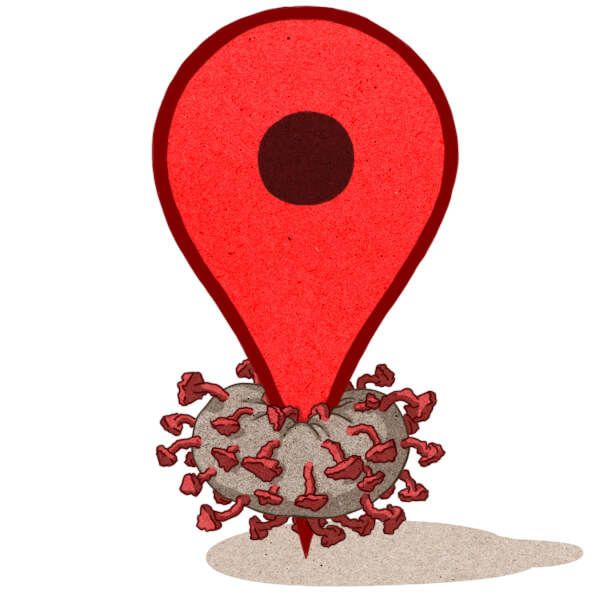 Contact Tracing
Contact Tracing
For months, experts have been emphasizing the importance of reliable contact tracing to help reduce coronavirus spread. The idea is, if you came into contact with someone who has tested positive for COVID-19, you should know about it and self-isolate or quarantine as soon as possible to limit further infections. But what if you could take contact tracing one step further, and assess how risky one day’s activities were before being contacted about potential exposure?
USC Computer Science Professor Cyrus Shahabi and his team are working on a contact-tracing app that aims to answer the question, Based on my location trails, what is my risk of being infected with coronavirus? The app allows users to enter symptoms and locations visited, and provides an individualized risk analysis, identifying potential hot spots and giving researchers a better idea of how the virus is spreading, without compromising user privacy.
It could help officials trace where the virus is going and alert people automatically, advising testing or temporary isolation. Using computer modeling, the researchers aim to detect not only direct transmission, but also contact with contaminated surfaces and indirect transmission.
“The key challenge is how do we reduce coronavirus spread in this immediate crisis, but also how do we contain hot spots going forward,” Shahabi said.
The project, which has received an NSF RAPI award, began as a collaboration with Peter Kuhn, a Dean’s Professor of Biological Sciences at the USC Dornsife College of Letters, Arts and Sciences, and will be extended to include a backend for data management and analysis in a collaboration with researchers at Emory University and the University of Texas Health Science Center.
For the COVID-19 contact tracing app, the team is initially focusing on privacy enhancements to mitigate privacy risks while ensuring immediate public health impact. Specifically, users can choose frequency of tracking or manual check-in, as well as specificity of uploaded locations — for instance, downtown L.A. versus Grand Central Market — as their risk evolves.
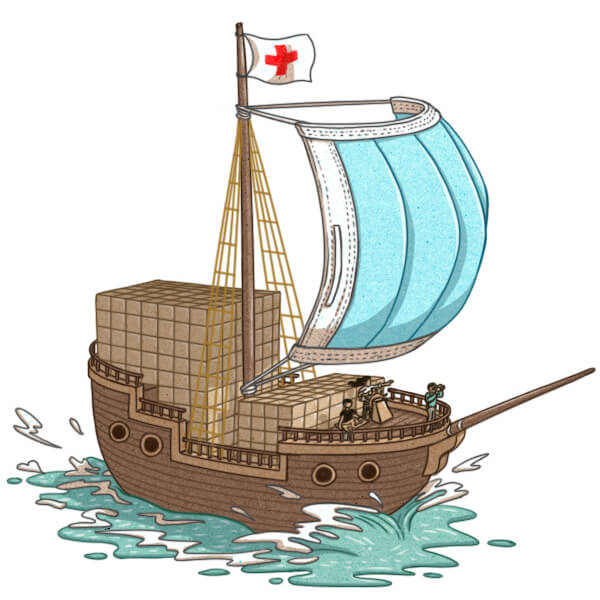 Mobilizing PPE
Mobilizing PPE
PPE Shortage
As coronavirus cases increased in March, the scarcity of PPE for healthcare workers signaled a secondary crisis. How could people treat patients without the ability to protect themselves and their families from contracting the virus as well? Immediate calls to action were issued by USC President Carol Folt, USC Viterbi Dean Yannis C. Yortsos and the National Academy of Engineering to do all that was possible to support those on the front lines.
In a virtual workshop hosted on April 3 by USC Viterbi faculty members SK Gupta, Andrea Armani and Yong Chen, professor of industrial and systems engineering and aerospace and mechanical engineering, more than 60 researchers, engineers, designers and medical professionals from the USC community discussed how to best support medical facilities like the Keck School of Medicine at USC through the production of masks, ventilators and even swabs.
One of the leaders in this effort was the Viterbi/Dornsife Machine Shop, which typically produces research equipment and scientific instrumentation to serve research projects through USC Viterbi and USC Dornsife. The shop quickly shifted its focus to support university efforts in reducing the shortages of essential PPE among healthcare workers. Under the leadership of foreman Seth Wieman, the shop produced protective face shields. The equipment was sent to Keck Medical Center for healthcare workers to use.
For USC Viterbi alumnus MacKenzie McClung, B.S.’20, the call to action was delivered at her home in Jacksonville, Florida. Returning home from Los Angeles because of shelter-in-place restrictions, McClung began to reach out to local universities and art museums to procure vital protective equipment, including gloves and masks and sanitary gowns, for local hospitals. The effort had a quick impact. Phil Gaby, director of strategic sourcing at Baptist Health in Jacksonville, received an estimated 10,000 to15,000 pieces of equipment through McKenzie’s efforts in just the first few weeks.
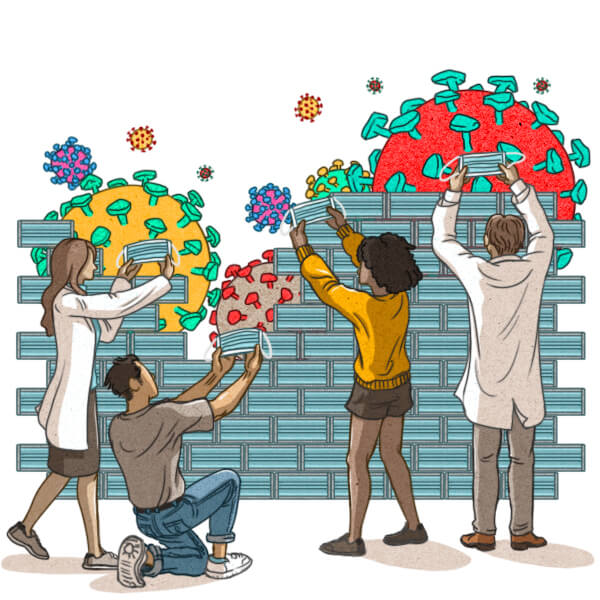
Collaborating on Public Health Nationwide
On April 7, the National Academy of Engineering issued a call to action to engineering students and professionals nationwide, requesting ideas for solutions to the COVID-19 pandemic. Through various means, USC Viterbi has helped answer that call.
The idea came from an original effort by the NAE’s Grand Challenges Scholars Program, or GCSP, to address the challenges posed by COVID-19. The NAE called for a larger, intergenerational effort that included both the GCSP students as well as seasoned engineers and NAE members. Dean Yannis C. Yortsos, who, along with Tom Katsouleas, the former dean of Duke University’s Pratt School of Engineering, and Richard Miller, president of the Franklin W. Olin College of Engineering, cofounded the GCSP, believes the NAE is uniquely qualified to address the challenges posed by COVID-19.
USC Viterbi Professor Najm Meshkati, a GCSP faculty adviser and a professor of civil and environmental engineering, industrial systems engineering and international relations, sent an email to all his current and former students urging them to participate in any way they could.
Julia Sircar, B.S.’20, was one of those students. She was part of USC Viterbi’s Grand Challenge Scholars Program. The initiative led to the launch of a virtual incubator where engineers can submit projects to support public health efforts in the global crisis. Sircar, along with alumni Soraya Levy, Rosie Halpin and Celeste Goodwin—all B.S.’20 — is part of an assessment panel, the first point of contact for project submissions. The panel screens the proposals for further consideration by the group. Among topics of focus are ramping up supplies of N95 masks and PPE, and more recently, contact tracing and how to scale up testing.
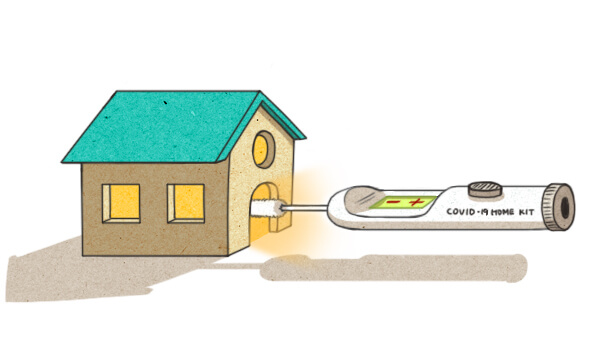
At-Home Testing
USC Trustee Ming Hsieh, B.S. ’83, M.S. ’84, has taken the lead on developing at-home test kits.
As president and CEO of Fulgent Genetics, which develops flexible and affordable genetic testing, Hsieh is at the forefront of addressing today’s pandemic. Shifting resources early on, his facilities have processed thousands of COVID-19 tests. His hope? “To create the equivalent of home pregnancy tests for the COVID-19 virus. Imagine getting rapid, simple, accurate results without using a laboratory to detect the virus in just a few minutes. We hope to make this low-cost test widely available for home use to detect the virus infection much quicker, much earlier and much easier,” he said.
After receiving emergency authorization from the Food and Drug Administration, Fulgent Genetics launched home-based tests using Picture Genetics, an at-home genetic testing platform it launched last summer, to provide a more convenient way to test for COVID-19. To qualify for an at-home test, individuals must complete an online eligibility screener, which prioritizes those most in need of testing. The test kit is sent to individuals in the mail, with instructions to return the kit via mail as well. Results are emailed within 48 hours of the lab receiving the sample.
 Combating Misinformation
Combating Misinformation
Accurate information about a potentially life-threatening virus is crucial in mitigating its effects. False claims ranging from hot water sanitizing surfaces to hoaxes about nationwide quarantines have been widely disseminated online, not only shifting focus from vetted strategies, like Los Angeles’ Safer at Home initiative, but also draining critical time and resources from agencies like the CDC. This is why USC Viterbi computer science researchers at Melady Lab, including Yan Liu, an associate professor in computer science, are analyzing millions of tweets to investigate how false information about the coronavirus spreads on social media, as well as to monitor public sentiment toward related policies.
Liu, the Philip and Cayley MacDonald Endowed Early Career Chair, and her team analyzed more than 5 million tweets from 182 countries since March. These were filtered according to topic clusters and trends and scanned for misinformation. Sentiment analysis was also used to understand emotional content — negative or positive feelings about the pandemic in general, as well as toward specific polices being enacted.
The researchers detected around 4% of the source posts contained false, misleading or clickbait information. They also found the overall sentiment on Twitter was positive for policies related to working from home (76%) and social distancing (70%), and that different countries had different sentiment distributions. The United States ranked higher among countries with more negative than positive sentiment, as compared to countries like China, where the outbreak is subsiding.
They hope to improve detection and analysis of misinformation and expose false, misleading and clickbait content so that people can guard themselves against it. Their work is a collaboration with the National Academies of Sciences, Engineering and Medicine’s New Voices in Science, Engineering and Medicine initiative.

Coping with Isolation
USC Viterbi has also turned its attention to coping mechanisms: How do you survive a complete change of lifestyle and consistent redefinition of normal life?
Garrett Reisman, professor in the Department of Astronautical Engineering, is no stranger to isolation. As an astronaut, he spent 95 days aboard the International Space Station in 2008.
He offers the following tips:
- Stay busy. Reisman cited the success of the 1915 Endurance Antarctica expedition, which aimed to make the first land crossing of theAntarctic continent. The expedition ultimately failed, but become emblematic of the great fortitude and endurance of its crew. The ship was crushed and sunk, stranding 28 men on the ice.
“This became one of the most successful unsuccessful missions of all time, because every single member of the crew made it back alive. How did they survive under these incredibly adverse conditions? Keeping the crew busy,” Reisman said. While we continue to stay home as much as possible, stay productive and keep our spaces tidy. “It will give you the psychological benefit that it did for the Endurance team,” he added.
- Communicate openly and honestly. Do not let things fester, and make sure to let others know when you have an issue — and be willing to admit you’re wrong and listen when the issue is with you.
- Be a leader and a follower. Reisman said on missions there were times when it was key to be the leader and other times when it was important to fall in line. What’s more, it’s important to volunteer for stuff no one wants to do and practice “team care.” “Small irritants become magnified in group living, so be cognizant of what these issues might be and try to be conscientious about them,” he said.
- Carve out personal space. Even if you don’t have a physical space you can make all your own, Reisman says finding a time in the day when a certain space belongs to you is important. “After the kids go to bed, the living room is mine. I watch TV and unwind. That’s my space,” he said.




